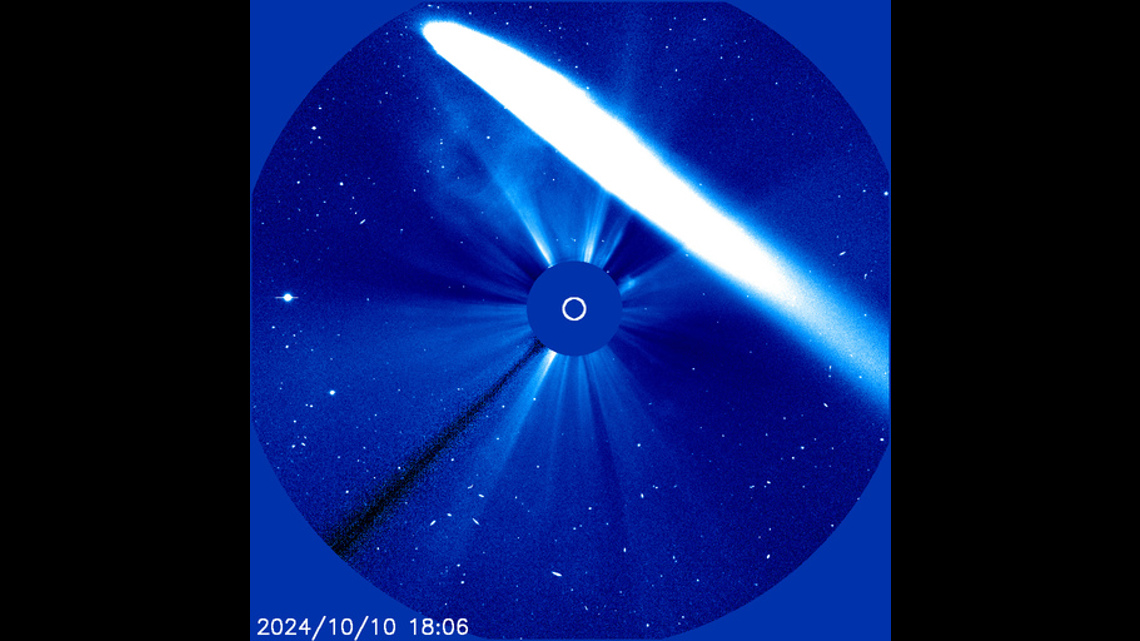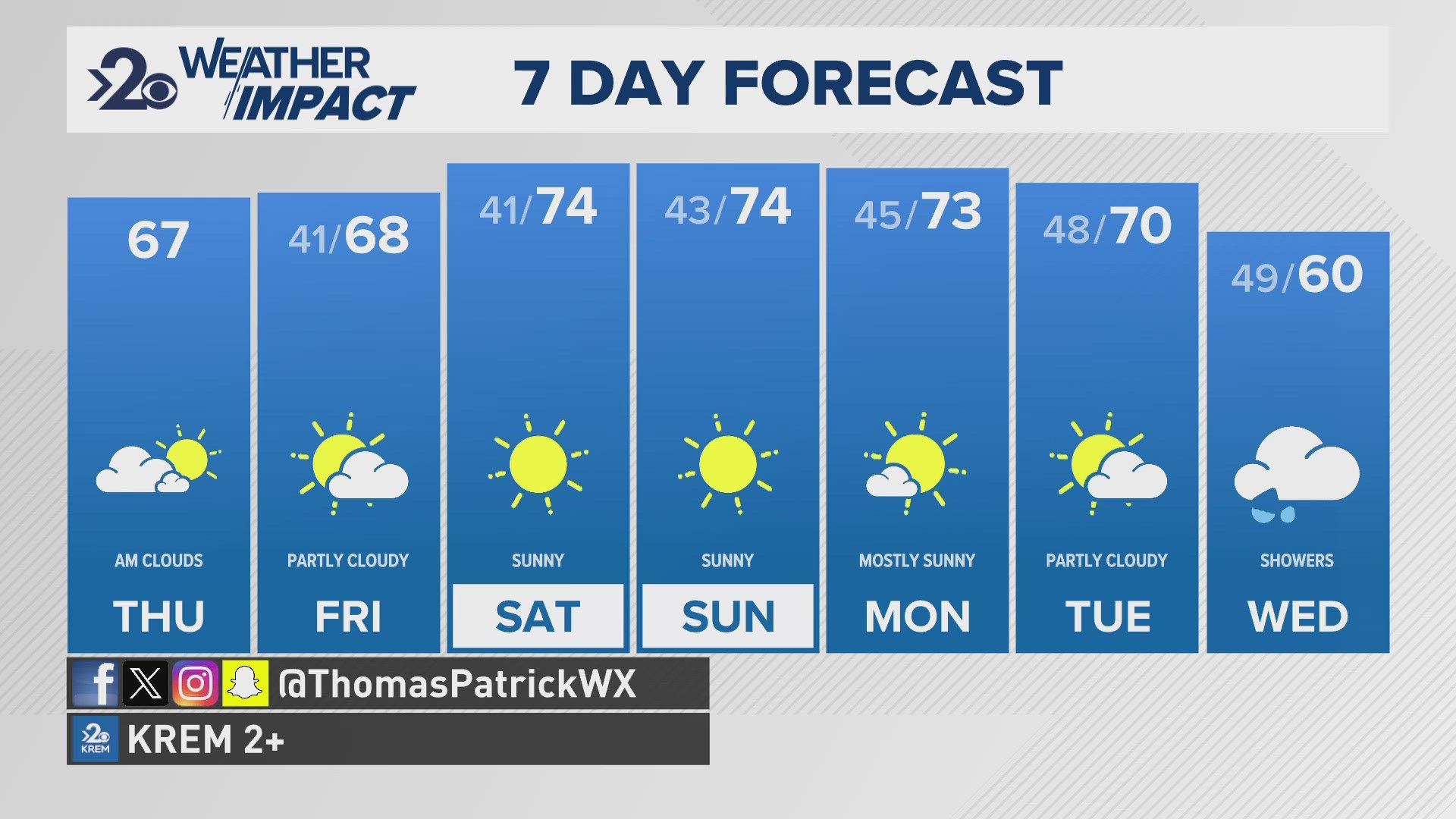SPOKANE, Wash. — It's already the brightest Comet since "NEOWISE" in August of 2020. Comet Tsuchinshan-ATLAS will be visible with the naked eye in the early evening skies in mid-October as it makes its pass through the Inner Solar System.
The comet and their long tails are great additions to an already beautiful starry sky field. And what makes this comet especially noteworthy is both its brightness and how long the tail is. The tail itself may cover 15-20° of arc length across the sky as it turns to the anti-solar direction. The comet, made of ice and rock is being vaporized by the sun's solar winds, so the tail will always point in the opposite direction as the Sun.
As for when to look for it, it may be barely visible on the evening of October 11 just after sunset in the western skies during twilight, likely around 6:45 p.m. to 7:00 p.m. But on October 12, the tail will turn upright and the comet will likely live above the horizon until 7:20 p.m... and the skies should be more than dark enough to see it with the naked eye easily!
The brightness will be around a -1.5 magnitude on October 11-12, but it will fade quickly as it moves away from the sun. On October 14, the brightness is down to about 0.0, but the trade-off is that it'll be visible a little later into the evening, until almost 8 p.m.
We'll have about a week of optimal viewing before Comet Tsuchinshan-ATLUS starts to become a bit too dim to view easily with the naked eye. It will then be more of a binocular and telescope object for the rest of the month.
Just one interesting note, the comet is making its closest approach to Earth on October 9, which is still 70.5 million miles away (the Sun is 93 million miles away). It's this date that the comet is technically at its maximum brightness with a magnitude of -4.5. However, the viewing point is very close to the Sun and the comet will be completely lost in the daytime.
But it was very interesting to see the comet pass through the frame of what are called "coronagraphs" which are special cameras aimed at the Sun to see coronal mass ejections. The comet totally photobombed this camera between October 7-10:


Best of luck to those viewing and happy (comet) trails!

